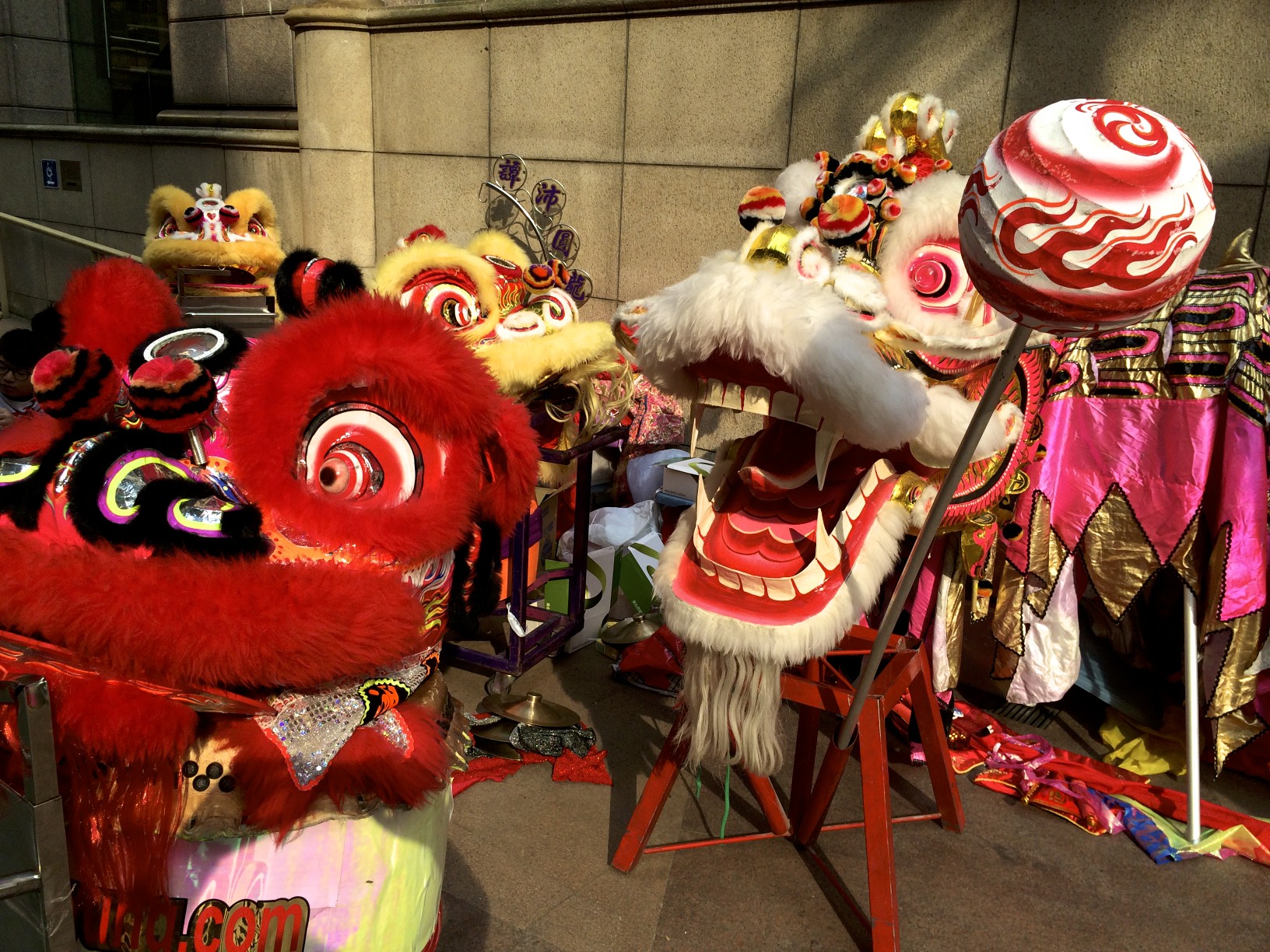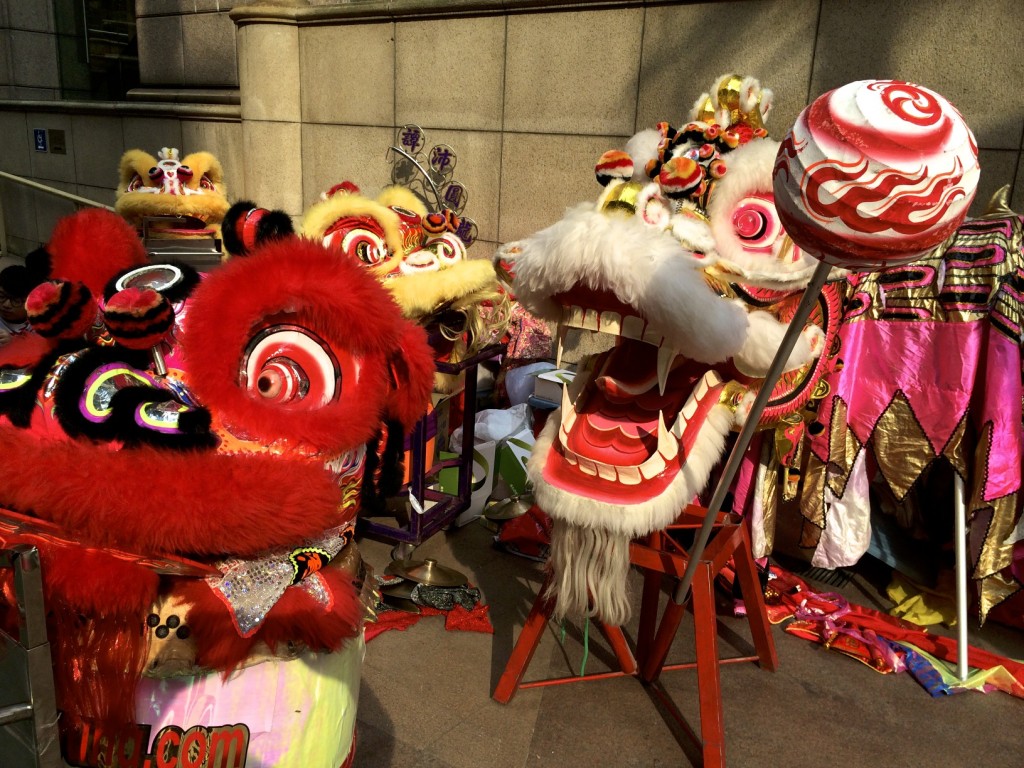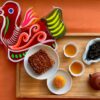
There are a lot of different celebrations for Chinese New Year. On the streets of Hong Kong during Chinese New Year, you may have seen lions and dragons dancing to clanging gongs and beating drums as part of the new year celebrations. So what is this lion dance and dragon dance all about? What is the difference between the two?
A lion dance (舞狮) is believed to bring good fortune. Many businesses arrange a team of lion dancers for a performance at the beginning of the new year hoping for a prosperous year ahead. Lions are also believed to be able to chase away evil spirits and protect the community.
There are two types of lion dances. Northern lion dance, common in northern China, usually have a pair of lions (male and female) dancing together. These lions typically have very long fur, somewhat resembling a shaggy dog, usually red or gold in color. In Hong Kong, we have the southern lion dance with lions that are much more ornate and come in various colors. One of the clear distinctions is a single horn at the center of the lion’s head.
A lion is usually led by a pair of dancers with one at the lion’s head and another in the rear. The person in front also controls the lion’s eyes and mouth, giving the lion lots of character with actions such as blinking. Most of the lion dancers are martial arts experts. A great lion dance shows the flexibility and agility of a lion. You could really sense it prancing around like a real lion! The expert dancers are light on their feet, completely coordinated, hopping from one spot to another. They often dance on stilts, performing difficult moves such as jumping backwards, which require significant skills.
One of the customary activities the lion does is “picking the greens” (採青). A piece of green, usually lettuce due to its auspicious-sounding name in Chinese which sounds like creating wealth, hangs from above (e.g. door to the office). Tied together to the lettuce is a red packet (lai see) filled with money. The lion often acts curious but skeptical, somewhat like a kitten looking to play with a ball of yarn. After a few cautious approaches, the lion would jump to pick the “greens”, spits back out the lettuce but keeps the lai see as its reward. The person who catches the lettuce from the lion is believed to have good fortune. Instead of lettuce, sometimes oranges or tangerines are used.
Dragon dances (舞龍) are also common during Chinese New Year. As a symbol of China, dragons are also believed to bring good fortune to the community. A dragon is much longer and bigger in size than a lion, also coming in different colors. Some believe that the longer the dragon, the more luck it will bring. A typical-sized dragon is managed by nine dancers each using a pole to lift and dip different section of the dragon’s body in a wave-like pattern, dancing to the beats of drums, gongs and cymbals. Careful planning to the choreograph and tight coordination is critical in order to enliven the dragon. While some formations are relatively straightforward with the dragon only rises and dips in waves, other more creative maneuvers require more skills. Twists and spirals are common, with dancers performing acrobatic moves to add to the liveliness of the dragon.
If you didn’t have a chance to catch a lion or dragon dance, Hong Kong Foodie has prepared some scenes for you here. Check out two short videos on our YouTube channel.
Enjoy!






